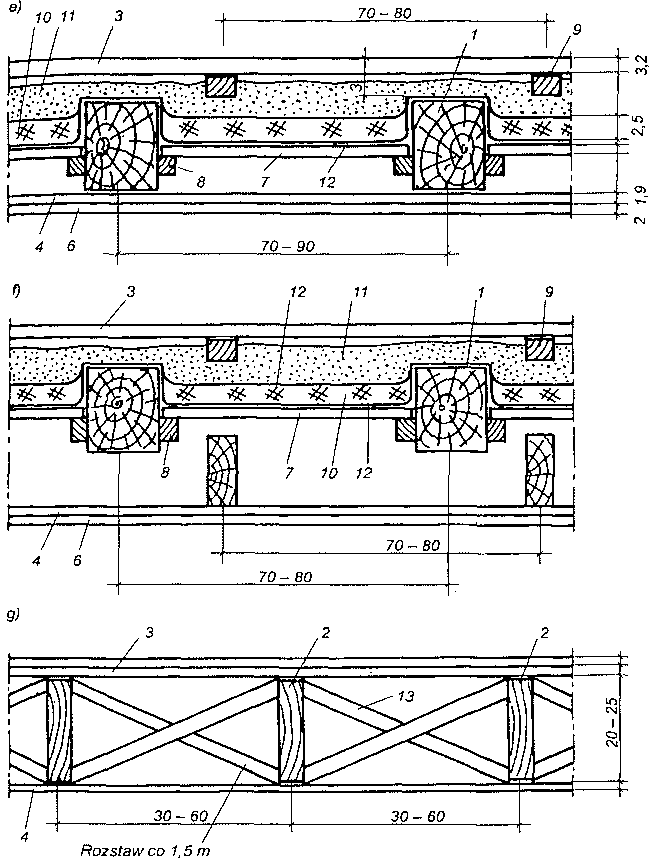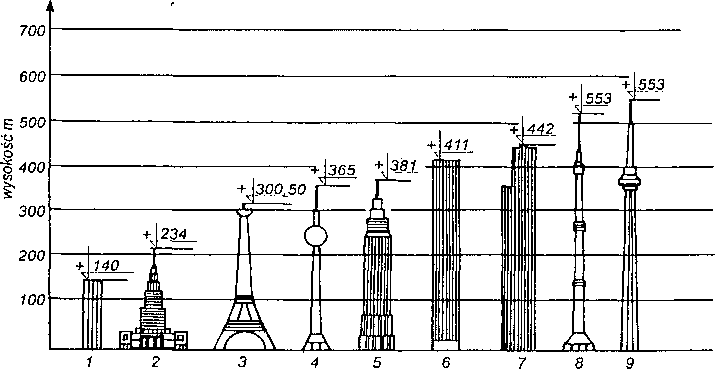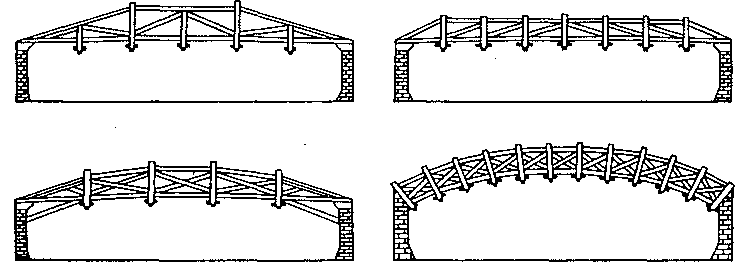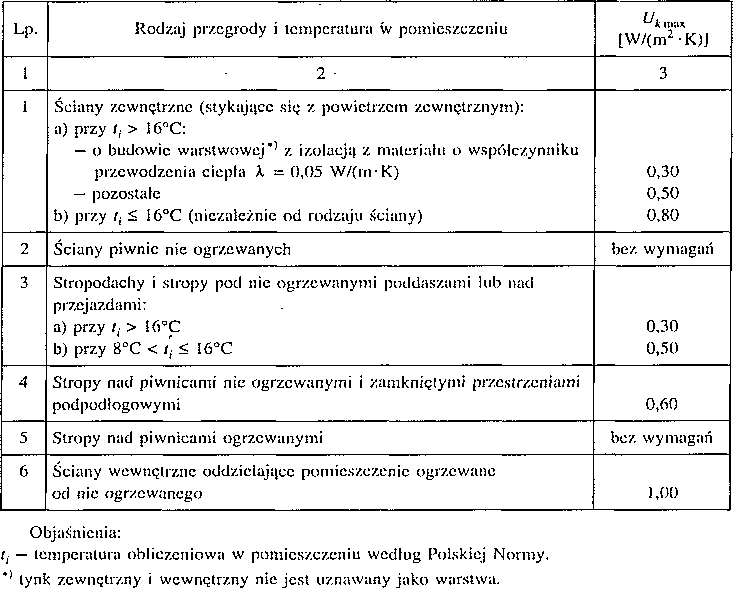Z kamienia i cegły budowano obiekty obronne, sakralne, zamki, mosty, i akwedukty oraz budynki mieszkalne. Ze względu na niekorzystne właściwości termiczne — wysoki współczynnik przenikania ciepła — kamień naturalny nie jest stosowany do wznoszenia budynków przeznaczonych na stały pobyt ludzi p. i zwierząt (budynki mieszkalne i budynki rolnicze) na tych terenach, gdzie wy-[ stępują niskie temperatury.
Mury z cegły ceramicznej są od dawna szeroko stosowane w budownictwie mieszkaniowym. Z cegły wznosi się budynki mieszkalne o różnej wysokości, ; od 1 kondygnacji do ponad 20 kondygnacji. Ze względu na korzystne zalety — trwałość, izolacyjność cieplna — z cegły wznosi się budynki szkolne, służby zdrowia i inne.
Ustrój konstrukcyjny budynków murowanych składa się z następujących głównych elementów:
a) fundamentu z częścią podziemną,
b) ścian nośnych,
c) stropów,
d) dachu lub stropodachu.
Część podziemna budynku (ściany piwnic) może być wykonana z murów kamiennych lub ceglanych. Dość często ściany piwnic wykonuje się z cegły, a kamień spełnia rolę okładziny dekoracyjnej na wysokości cokołu, a nawet ścian wyższych.
Do wykonania murów kamiennych stosuje się kamienie naturalne z następujących rodzajów skał:
a) magmowe: granit, sjenit, andezyt,
b) osadowe: piaskowiec, dolomit, trawertyn i wapień,
c) przeobrażone (metamorficzne): kwarcyt.
Wapień nie może być stosowany na fundamenty, gdyż rozpuszcza się w wodzie; natomiast nadaje się na cokoły i ściany przy wykonaniu odpowiedniej izolacji poziomej.






